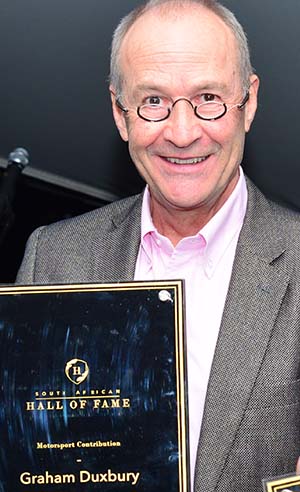In addition to Ferrari and Alfa Romeo, there is a third Italian marque with an impressive Formula One story line. For Maserati fans, there are many glorious moments to remember and celebrate.
 By Graham Duxbury
By Graham Duxbury
That said, it’s a F1 story with a bitter-sweet ending that played out right here in South Africa half a century ago.
The legend began in 1914 when brothers Alfieri, Ettore and Ernesto Maserati opened a small workshop in Bologna to prepare engines for customers’ racing cars.
Alfieri and Ernesto would often get behind the wheel themselves and were soon seen as accomplished racing drivers. After WW1, Alfieri built a racing car to carry the family surname.
Another brother Mario – an artist – was commissioned to design the Maserati logo. He chose the trident, inspired by the famous statue of Neptune, the Roman god of the sea, in Bologna.
The first Maserati, the Type 26 (representing 1926, its year of manufacture), featured a 1,5-litre supercharged engine.
Amazingly it won on debut, in the hands of Alfieri, in one of the most gruelling races of the time, the Targa Florio.
While this success led to many more, they were without Alfieri who died in 1932 during surgery following liver complications. His fame was such that he was given the Italian equivalent of a knighthood.
The remaining Maserati brothers subsequently sold their shares in their company, which was relocated by the new owners to Modena, where it remains to this day.
Nonetheless, the brothers continued in the company and built many outstanding Maserati racing cars that often featured in pre-WWII Grand Prix epics.
They even achieved back-to-back wins in the 1939 and 1940 Indianapolis 500, making Maserati the only Italian manufacturer ever to win this great American classic.
The first race to be held under the new Formula One regulations of 1950 was the non-championship Pau GP. It was won by the Argentinian, Juan Manuel Fangio, in a Maserati 4CLT.
In 1952 Maserati hired former Ferrari engineer Gioachino Columbo who became responsible for some of the Maserati’s greatest designs.
In 1954, driving a Columbo-penned Maserati 250F, Fangio won the first two F1 races of the season – the Argentine and Belgian GPs.
Under contract to Mercedes-Benz, he then switched to the newly-formed German team, going on to win the 1954 World Championship.
Never again has a driver clinched a F1 championship title driving cars from different manufacturers.
The Maserati 250F was an exceptional racer. It even tempted Stirling Moss to abandon his resolute “British-only” philosophy and buy one to enter as a privateer.
Later, in a “works” 250F, he won the 1956 Monaco and Italian GPs.
Fangio, by now a four-time World Champion, signed to drive for Maserati in 1957. He won four more GPs including the German GP on the daunting Nurburgring Nordschleife where beat Mike Hawthorn’s Ferrari in a titanic battle. It was Fangio’s finest and last triumph in the year in which he won his fifth and final crown.
Around this time Maserati developed a new 2.5-litre V12 engine. It offered no real power advantage over the 250F’s sturdy straight-six, so it was shelved – but not forgotten.
The advent of the 1.5-litre F1 in 1961 saw Maserati switch focus to its sports car programme. It was left to privateer teams to enter mainly uncompetitive cars powered by Maserati’s antiquated Type A6 1,5-litre straight-six engine which had its roots in the pre-WWII Maserati 6CM.
However, when the 3-litre F1 was announced for 1966, it was a bored-out version of the Maserati V12 that powered the Cooper team’s new T81 chassis. The engines were supplied by the Chipstead Group, Maserati’s UK distributors and new owners of the Cooper Car Company.
John Surtees took the Cooper T81’s first win in the final race of the 1966 season in Mexico, while his replacement in the team, Pedro Rodriguez, won the 1967 season opener at Kyalami. (Rodriguez’ success was made even sweeter for the Cooper team by John Love’s second place in a privately-entered Cooper Climax.)
However, not only was this Cooper’s last GP win, it was also Maserati’s final F1 victory.
It was left to privateers Jo Siffert and Jo Bonnier to quietly close the book on Maserati’s F1 involvement. At the South African GP at Kyalami a year later they entered Cooper Maseratis for the last time. Bonnier retired and Siffert came home a creditable seventh in the rapidly-aging racer.
To commemorate these proudly South African milestones in the Modenese factory’s illustrious history, it designed the Maserati Kyalami, a four-seater GT coupe. Just 200 were built between 1976 and 1983.
